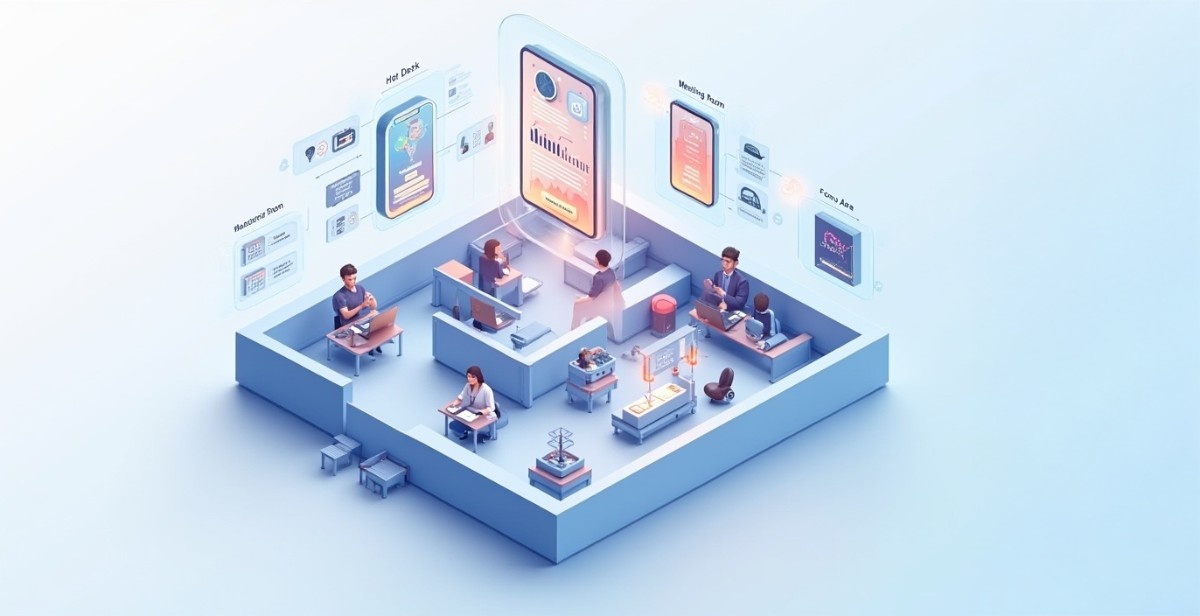Did we ever envision a world that would completely function on technology? The pandemic has in a way fastened the shifting of the corporate mindset of – empowering the environment by technology and wanting to enhance individual well-being.
Fueling the SaaS revolution
We once believed that mobile apps were excellent for quick, little activities and that desktops and laptops were the devices of choice for more in-depth and serious work. Most people nowadays feel the contrary is true. They expect to be able to use everything that is available on a PC on their mobile device. And it’s this desire that’s fueling the enterprise’s SaaS revolution.
Business software that we used to buy on discs has successfully transitioned to the SaaS model in the last 10 years, and additional web-based business services have appeared to transform the way we operate. Integrated office management systems, on the other hand, remained firmly on-premises. Space and facility management, real estate portfolio management, maintenance, and visitor management were all considered on-premise services, hence a SaaS solution was unnecessary. In other words, by design, whatever ran the workplace stayed in the office. But it appears that everything is about to change. IWMS is migrating to the cloud, which opens up a world of possibilities.
Cloud-based Intelligent Workplace Management System is a new type of workplace automation.
IWMS serves a critical role in facility management in its original form. It provides facility managers with a better understanding of occupancy and headcount. It guarantees that they are making the most of their available area. Because everyone in a company needs facility information, having everything they need in one place is more productive and provides a better overall experience. Data is used by facilities managers to make judgments about the company’s real estate portfolio, do lease research, and manage financial planning. However, as IWMS migrates to the cloud, it has the potential to become much more.
Cloud-based platforms will expand into a platform for managing and automating a myriad of different office systems, in addition to all of the activities that traditional IWMS handle. Traditional IWMS are closed systems; however, the cloud (with an open API) allows for unrestricted integration, allowing you to connect with the best-of-breed services for your office’s needs.
On-the-spot resolution of workplace concerns
How much better and more productive would you be if you could actually work during your working hours? Do you have any idea how much time you waste looking for a meeting place, tracking down a package delivery, or troubleshooting computer problems? The results came from a workplace habits study. The average worker, for example, reported spending up to 30 minutes each day resolving technological issues. That translates to two hours every week, or 100 hours per year.
Another pet annoyance identified by the survey: we spend 9-20 hours a week in meetings and become annoyed when we can’t find a suitable room. Then there’s the dreaded conference room, which everyone avoids at all costs since it’s either constantly chilly, has poor conferencing technology, or isn’t nearly as soundproof as you’d hoped.
Even if these annoyances are minor, they accumulate over time. That’s where IWMS as a service (SaaS) comes in. Employees can check whether conference rooms are still occupied before leaving their offices by integrating other cloud services with the IWMS. Not only that but there’s more:
- Room and equipment condition, lighting, energy usage, and even occupancy patterns are all measured using integrated sensors that input data into the IWMS.
- These documented difficulties provide validity to the complaints, and facility managers will be able to recognize and fix problems more promptly as a result.
- When guests stay in a room for longer than their permitted period, occupancy records provide irrefutable proof.
- The property management staff may make changes that tailor each room for how it’s being utilised based on constant, real-time data and instant input from employees who can access the system from their mobile devices. They might decide to reserve popular spaces for shorter meetings only, or reclaim space from less-used rooms to use for other purposes.
Visitor management allows you to keep track of visitors and boost workplace security.
With the addition of a cloud-based visitor management system to the IWMS, the check-in process can be streamlined. When visitors come, they sign in, which starts a sequence of automated processes:
- To help maintain workplace security, the visitor’s name is checked against several worldwide lists of known people who should not be admitted, as well as customize the blocklists.
- The visitor reads and signs any required entry documents, including NDAs.
- The terminal camera captures a picture of the guest, which is then printed on a badge along with the visitor’s name and the host’s name.
- The visitor management system integrates seamlessly with a string of services ensuring smooth indoor movement.
- The system tells the host of the visitor’s arrival and activates the meeting room that was previously selected.
- The visitor receives a text message with the wi-fi password, and by the time the host greets them in the lobby, they’re logged in and ready to go.
The future workplace is already here.
When Gen Z enters the workforce, they want to get employees back to office with integrated, personalised experiences and cutting-edge technology that allows them to focus on their job rather than the mechanics of office busywork. They anticipate:
- Their phones will serve as their workplace security. Their presence will be detected by a sensor or QR code, and face recognition admission systems will scan to admit them inside the office.
- Artificial intelligence (AI) systems would make their workday more efficient.
- They’ll have smart workspaces to collaborate with their teams.
- They’ll be able to work on both laptops and mobile devices, switching back and forth as needed.
All of the technology required to carry out these scenarios is currently available. In addition, when deciding where to work, incoming workers will consider the advantages integrated, cloud-based IWMS platforms may provide as a differentiation.
The potential of this new generation of IWMS benefits more than just the employees. According to a study conducted by Research and Markets on IWMS, businesses will enjoy significant cost reductions and improved space use. They discovered that the average business will see:
- The amount of energy consumed has decreased by 10%.
- The efficiency of facility usage rose by 42%.
- The cost of facility upkeep was reduced by 14%.
- Workplace management improved by as much as 40%.
As we go into the future, key themes emerge that position SaaS-based IWMS systems as the leader in the workplace transformation movement:
- Over 75% of IWMS implementations will become web-based.
- Companies that encourage a choose-your-own-work-style culture will experience an increase in employee retention,
- A quarter of businesses will be able to provide employees with a comprehensive catalogue of smart workspaces managed by IT, real estate, and facilities management, allowing them to see which spaces are available at any given time and what technology is available in each.
An Integrated Office Management System Covid suite is responsible for all of the technology that enables these improvements. Every facet of the office is migrating to the cloud in a big manner, from real estate and space planning to workplace security, visitor control, conference room management, personalisation, package delivery, and more. With all these features available in the Veris platform, all of this would be on your fingertips with just a few touches on your smart devices. Be ready to have the world in your hands!






































.avif)
.avif)





